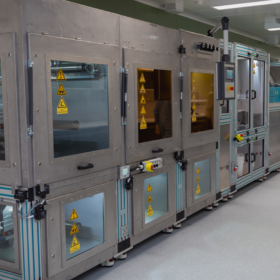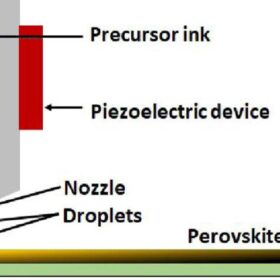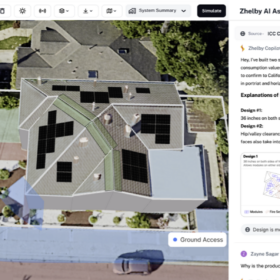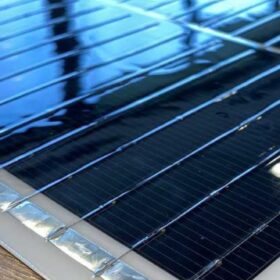Agrivoltaics can improve water conservation in Africa
Research led by the University of Sheffield installed an off-grid agrivoltaic system in Tanzania and a grid-tied agrivoltaic system in Kenya. They found the installations helped boost crop yield and conserve water while generating electricity at a lower cost than the national grid.
Coatema launches roll-to-roll production lines for organic, perovskite, dye-sensitized solar cells
German PV equipment company Coatema Coating Machinery says its roll-to-roll processing solutions cover from lab or pilot to production scale.
Inkjet printed formamidinium tin-lead perovskite cell with 10.26% efficiency
Researchers from Germany and India have demonstrated an inkjet printing method to fabricate formamidinium tin-lead perovskite solar cells, achieving 10.26% power conversion efficiency and a 1.25 eV energy bandgap.
New lab-sized slot die coater for thin film PV
Ossila, a U.K.-based scientific equipment and materials supplier, has launched a new version of its slot die coater for research labs. It is suitable for teams working on thin film photovoltaics at the scaling-feasibility test stage.
New encapsulation method boosts perovskite solar cell efficiency by 8%
Scientists at Aalto University in Finland have demonstrated a one-step encapsulant method for perovskite solar cells that provides shielding from oxygen and moisture-induced degradation and a significant relative improvement in efficiency.
Solar LED streetlight with integrated PV panels, battery
Taiwan-based electronics manufacturer Para Light Electronic has launched a compact solar LED streetlight with integrated PV panels and battery to provide up to 15 hours of area-lighting for pedestrian walkways and roads.
U.S. startup offers rooftop solar software for installers
Software company Aether Energy has launched in Europe to support residential and commercial rooftop solar PV installer businesses, from pre-sales to after-sales and energy monitoring. It recently secured seed capital to finance its plan to expand its business.
Researchers build all-perovskite tandem solar cell with 28.2% efficiency
An international research team has built an all-perovskite tandem solar cell based on a wide-bandgap top perovskite cell with a 20.5% efficiency. The 1-cm2 scale tandem device achieved the highest efficiency ever reported to date for all-perovskite solar cells of this size.
Chinese PV Industry Brief: Polysilicon prices steady amid demand issues
The China Nonferrous Metals Industry Association (CNMIA) says that prices for solar-grade polysilicon remain stable this week despite strong producer pricing intentions, as unresolved downstream demand issues are holding back sales potential.
Softbank, Longi develop 665 g/m2 heterojunction solar modules with 22.2% efficiency
Researchers from the two companies have built a lightweight and flexible silicon heterojunction (HJT) PV panel that measures 563 mm x 584 mm and weighs just 218.5 g.










